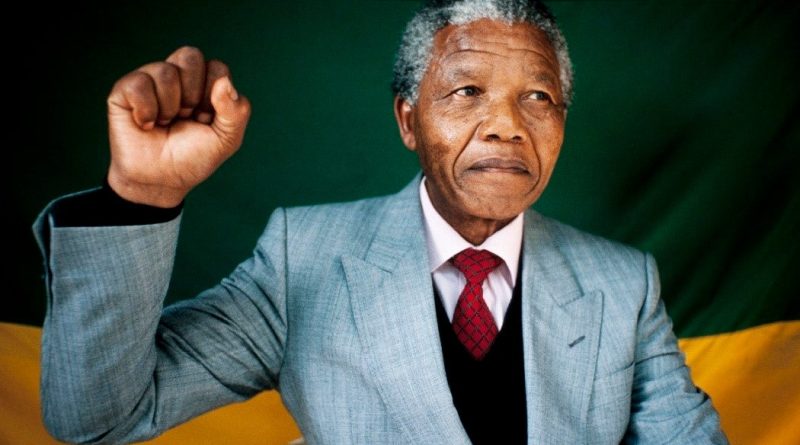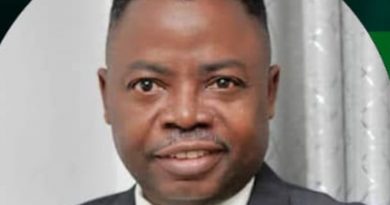The impact of Nelson Mandela on Human Rights as Global Legitimizer
Tariq Ali Faraj Al-Ansari
Human Rights are a fundamental pillar of the UN Charter. In the preamble “We the people of the UN determined to reaffirm faith in fundamental Human Rights, in the dignity and worth of human person, in the equal rights of men and women”. Human Rights were strongly reaffirmed by and emphasized in High Level declarations of the UN summits and in all major global outcomes. Human Rights also constitute the major thrust of the Universal Declaration on Human Rights.
In this article, I would like to highlight some facts and events that made Nelson Mandela, a global figure in the area of Human Rights, for the time and efforts he devoted for his fight for freedom and dignity, for giving an example to the International Community that Human Rights principles are defined by actions taken by people like him.
On November, 2009, the UN General Assembly declared July 18th as Nelson Mandela International Day which is his date of birth. The influential leader spent 67 years of his life dedicated to fighting for human rights and against prejudice and racism. On Mandela Day, people are encouraged to spend 67 minutes of their time supporting charity or serving their community. (UNGA Resolution A/RES/64/13).
Nelson Mandela’s political career began in 1944, when he helped found the African National Congress Youth League (ANCYL). The parent organization (ANC) was formed in 1912 to unite the African people and being at the forefront of radical change, politically, socially and economically. In 1948, Mandela became the secretary of the ANC Youth League, and by 1950, he had become its president. Mandela’s activism developed from generally seeking change to specifically trying to alter the unjust status of his people. In 1952, he was elected national volunteer-in-chief of the 1952 Defiance Campaign. This campaign was organized to protest the unjust apartheid laws that were in place in South Africa. Apartheid was a system of racist laws and policies of total segregation in South Africa that were put in place in 1948. Mandela organized resistance against the discriminatory legislation established by the apartheid system. By 1952, he had also opened up the countries’ first black legal firm, when a racist government ruled the nation. That same year, he was elected president of Transvaal Law Society (an incorporated law society). After continuous banning, he was forced by the Transvaal Law Society to resign. The African National Congress (ANC) was banned in 1960, and just after, Nelson Mandela argued in favour of the creation of a military wing within the ANC. In 1962, Mandela was caught by the police for illegally leaving the country for military training and was sentenced to life imprisonment. From 1964 to 1982, he was imprisoned at Robben Island Prison. It was during his time at these prisons that the leader’s reputation grew. He was allowed one visitor a year and one letter every six months. Somehow, these years spent on the island were transformative for Mandela. There, he became the master of the prison. Despite the brutal conditions in the prison, Mandela was able to use his wits and charm, to manipulate even the cruellest prison guards, and he became the leader of his fellow inmates. He left prison as the mature leader who would go on, within a matter of years, to run the entire country and deliver it from apartheid.
In 1991, at the first national conference of the African National Congress in South Africa since its banishment in 1960, Mandela was elected president of the organization. He was committed to ending the apartheid reign in South Africa. In 1993, he was awarded the Nobel Peace Prize jointly with Frederik Willem de Klerk, former South African president, “for their work for the peaceful termination of the apartheid regime, and for laying the foundations for a new democratic South Africa”. In 1994, Nelson Mandela became the first black president of South Africa, after more than 300 years of only white rule (another tremendous international event, followed by millions all over the planet). He won the election as a member of his African National Congress party in the first democratic poll in South Africa’s history. Mandela was determined to help his country through the transition from apartheid, white-run government, to a peaceful and forgiving one in that short amount of time. He “cherished the ideal of a democratic and free society in which all persons live together in harmony and with equal opportunities” (Mandela). He wanted to, once and for all, have a South Africa where people of all races and religions were equal in the eyes of the law.
Mandela’s Government of National Unity and its successful transitional justice became a model for other societies in which there had been conflict. Its Truth and Reconciliation Commission showed the world that, through the discovery and knowledge of past events and horrors, we can move on to a peaceful, new chapter.
According to the United Nations, transitional justice is all practices and procedures that have to do with a society’s effort to cope with a legacy of past cruelty, in order to make sure that people are held accountable and that justice is served in the interest of reconciliation. When he became the president of South Africa, Mandela had to organize a system of transitional justice that would allow the country to recover from the trauma of the degrading apartheid. He knew that in order to move on, the nation would have to develop mechanisms to handle the human rights violations that took place under the rule of the past governments. From April 27th, 1994 until February 3rd, 1997 the Government of National Unity (GNU) governed South Africa. The GNU aimed to correct the injustices that were left behind as a legacy of apartheid. The GNU mandated the South African Truth and Reconciliation Commission (TRC). The TRC was intended to create an inherently whole picture of the human rights abuses that were committed under apartheid. The South African TRC showed people the reason, nature and degree to which these human rights were violated.
Mandela’s 27 years of imprisonment were ones of intense personal growth. 18 of those 27 years were spent on Robben Island. He was confined to a small cell, prison conditions were severe and he was forced to do hard labour in a quarry. But this experience gave him the birth of a leader.
During his time in prison, Nelson Mandela became recognized as the most significant black leader in South Africa. As the anti-apartheid movement gained strength and following, Mandela became the symbol of resistance against the prejudiced government. While in prison, he refused to compromise his political principles in order to gain freedom or a remission of sentence. Multiple times, he was offered freedom in exchange for renouncing some of his beliefs. His refusal to change his views was a source of strength to his fellow prisoners, and freedom fighters everywhere. Mandela was finally released on February 11, 1990. This was a historic moment, followed by millions all over the world. Once he was free, Mandela spent all of his time dedicated to fighting for the human rights of the people in his country. He set out to attain the goals that he and his fellow leaders had set, decades earlier.
Mandela’s use of the rule of law in South Africa inspired its use in many other countries. He helped these countries realize that it is possible to overcome the disputes of the past by adopting a culture of peace and discussion. In order for true reconciliation, this discussion would have to be conducted democratically, with respect for the rule of law and human rights.
Nelson Mandela’s clever implementation of reconciliation and tolerance showed the world their infinite power to repair even the most damaged of situations. He understood how powerful words are, and that they can change people’s minds and hearts. He showed the world that our shared humanity could allow us to forgive the sins that some of us have committed. He demonstrated the power of peaceful action and putting the good of the whole before the good of ourselves. Through the reconciliation process in South Africa, the world learned that when people make the effort to learn from and respect one another, and to listen to each other, they could accomplish anything. He was a responsible and intelligent leader when he formed a diversified inclusion government. He liberated a country from a system of violent prejudice and helped unite white and black, oppressor and oppressed, in a way that had never been done before.
Nelson Mandela saw this as crucial to the establishment of a full and free democracy in South Africa, post-conflict. The fact that this plan consisted of restorative, not retributive justice made it noteworthy. Once these people could come to terms with the horrible discrimination that they had been put through, they could finally begin to heal and forgive. The South African TRC’s impeccable program is now viewed as one of the best transitional justice approaches ever put into practice. It is often used as a model for conflict resolution.
In conclusion, without any doubt, due to the long years he spent in prison, Mandela learned the patience and strength that a non-violent struggle entails. He perhaps also realized that civil rights and justice movements can hardly ever mobilize the level of armed violence necessary to defeat a police state, and that ultimately violence only brings more violence.
Nelson Mandela achieved his goals through non-violent struggle. He will remain iconic figure to the civil rights and social justice. His influence and actions paved the way for legitimizing the necessary means to end injustice and discrimination. For his own defence he stated: “ I have fought against white domination, and I have fought against black domination. I have cherished the ideal of a democratic and free society in which all persons live together in harmony and with equal opportunities. It is an ideal which I hope to live for and to achieve. But if needs be, it is an ideal for which I am prepared to die”. This ideal has helped him change the world while he was in prison and will always continue to constitute a unique concept of peace and protection of Human Rights. Not only in Africa, but globally.
Ambassador Tariq Ali Faraj Al-Ansari is the Qatar Ambassador to South Africa
Source: Diplomatic Society




